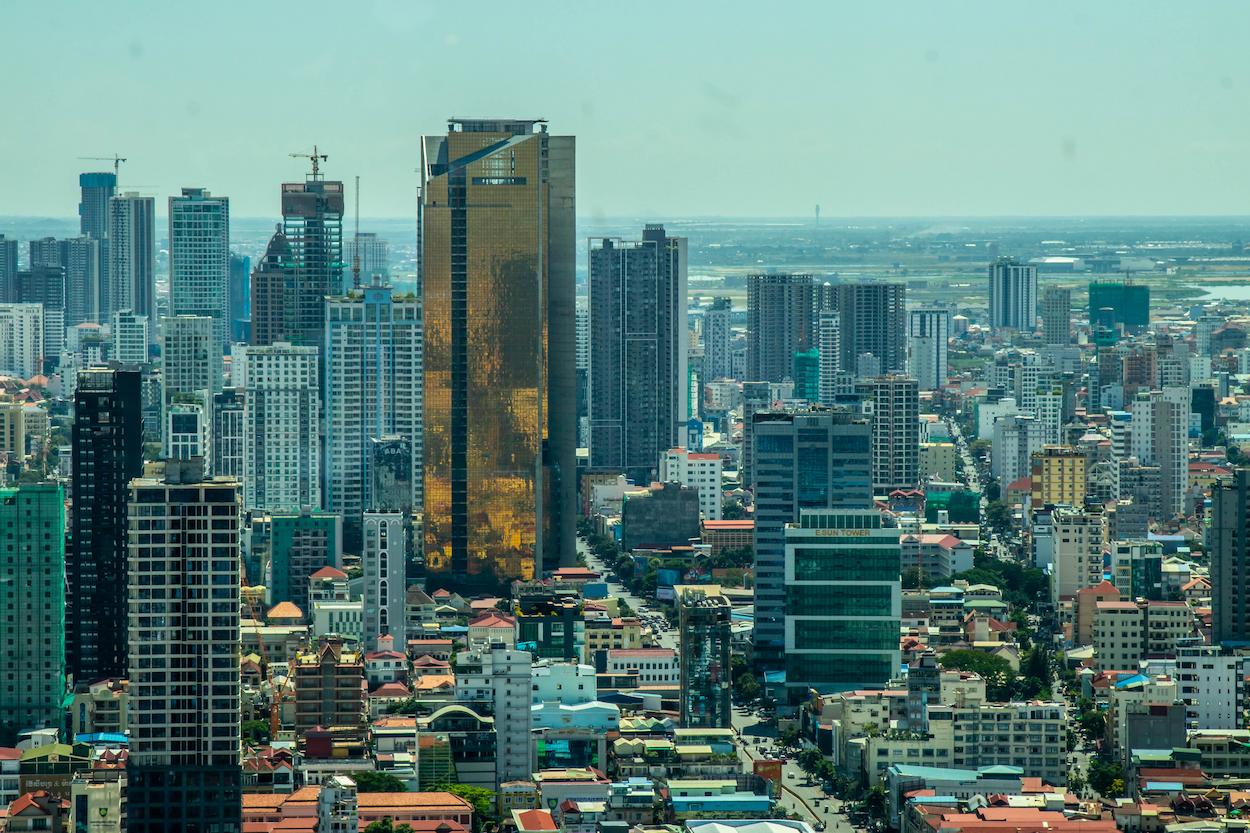Introduction: An Overview of Cambodia’s Economic Heart
Phnom Penh is not only the capital and the political heart of the Kingdom of Cambodia but also the country’s single most important economic center. With a vision to become a modern city within the ASEAN region, Phnom Penh has attracted substantial interest from domestic and foreign real estate investors, especially in the context of rapid economic growth and large-scale infrastructure development.
This analytical profile provides key data (based on 2024 estimates) and an in-depth analysis of Phnom Penh’s investment potential, focusing on the Phnom Penh Real Estate Sector and Phnom Penh Investment.
I. Key Geographical and Administrative Data (2024 Estimates)
| Key Data Point | Detail |
| Administrative Status | Capital City |
| Capital | Phnom Penh |
| Postal Code | 12000 (12XXX) |
| Total Area | 679 square kilometers (km²) |
| Total Population | Approximately 2.3 million (2024 estimate) |
| Border | Entirely surrounded by Kandal Province |
| Administrative Structure | 14 Districts, 105 Communes (Sangkats), and 953 Villages |
II. Population Growth and Strategic Geographic Location
1. Strategic Geography
Phnom Penh boasts a prime geographic location at the convergence of the Mekong, Tonle Sap, and Bassac rivers, which has made the city a crucial trade and commercial link via waterways for centuries. This location provides significant advantages for transportation and logistics sectors.
2. Population Growth and Market Demand
With a population estimated at nearly 2.3 million people in 2024 (excluding the floating population), Phnom Penh has a dynamic young workforce and massive market demand.
- Impact on Real Estate: This growth drives high demand for all types of housing (condominiums, link houses), especially quality housing in the affordable to mid-range segments, pushing development outward from the city center.
III. Role as an Economic and Financial Center
Phnom Penh acts as Cambodia’s economic and financial center, contributing significantly to the nation’s Gross Domestic Product (GDP).
1. Diversified Economy
The city’s economy is focused on diverse services, including:
- Banking and Finance: Home to the headquarters of all major commercial banks, both domestic and international.
- Trade and Retail: Features numerous large commercial centers, shopping malls, and luxury retail services.
- Industry: The outskirts of the city are crucial locations for Special Economic Zones (SEZs) and manufacturing plants.
2. Real Estate as the Backbone
The Phnom Penh Real Estate Sector remains one of the most attractive sectors for investment. The market has evolved from a focus on high-end office buildings and premium residences to a boom in Borey (gated community) projects and industrial real estate in suburban areas. New Master Plans aim to expand the city in a more orderly and efficient manner.
IV. Large-Scale Infrastructure Development and Investment Opportunities
Investment growth in Phnom Penh is directly linked to major infrastructure investments by the Royal Government.
1. The 3rd Ring Road Project
Critical infrastructure projects such as the 3rd Ring Road have served as major economic catalysts.
- Impact: This road not only facilitates the transportation of goods from Sihanoukville Autonomous Port and the national road network but has also boosted land prices and spurred the development of residential and industrial projects along its entire route. This creates new opportunities for Phnom Penh Investment in the suburban and peri-urban zones.
2. Supporting Infrastructure
In addition to roads, projects like the new International Airport (linking the city globally) and improvements to the city’s flood control and drainage systems have increased the attractiveness and sustainability of living and investing in the capital.
V. Tourist and Cultural Sites: Elements of Attraction
As a Phnom Penh Cultural Center, the city holds significant appeal for both tourists and residents.
| Major Tourist Sites | Type |
| The Royal Palace and Pagodas (Wats) | Historical/Religious |
| The National Museum and Choeung Ek Genocidal Center | Historical/Cultural |
| Central Market (Phsar Thmey) and Riverside Area | Commercial/Recreational |
The presence of these historical and tourist sites ensures a consistent flow of tourism and commerce, which ultimately supports the hospitality, food & beverage, and commercial real estate sectors.
Conclusion
Phnom Penh continues to grow at a rapid pace, supported by a young, growing population and significant government investment in essential infrastructure. For domestic and foreign real estate investors, the city offers rich investment opportunities, spanning the housing market (Boreys, condos), the commercial market (office spaces), and industrial real estate along the ring roads. Understanding the ongoing economic growth and urbanization is key to capitalizing on future Phnom Penh Investment returns.

